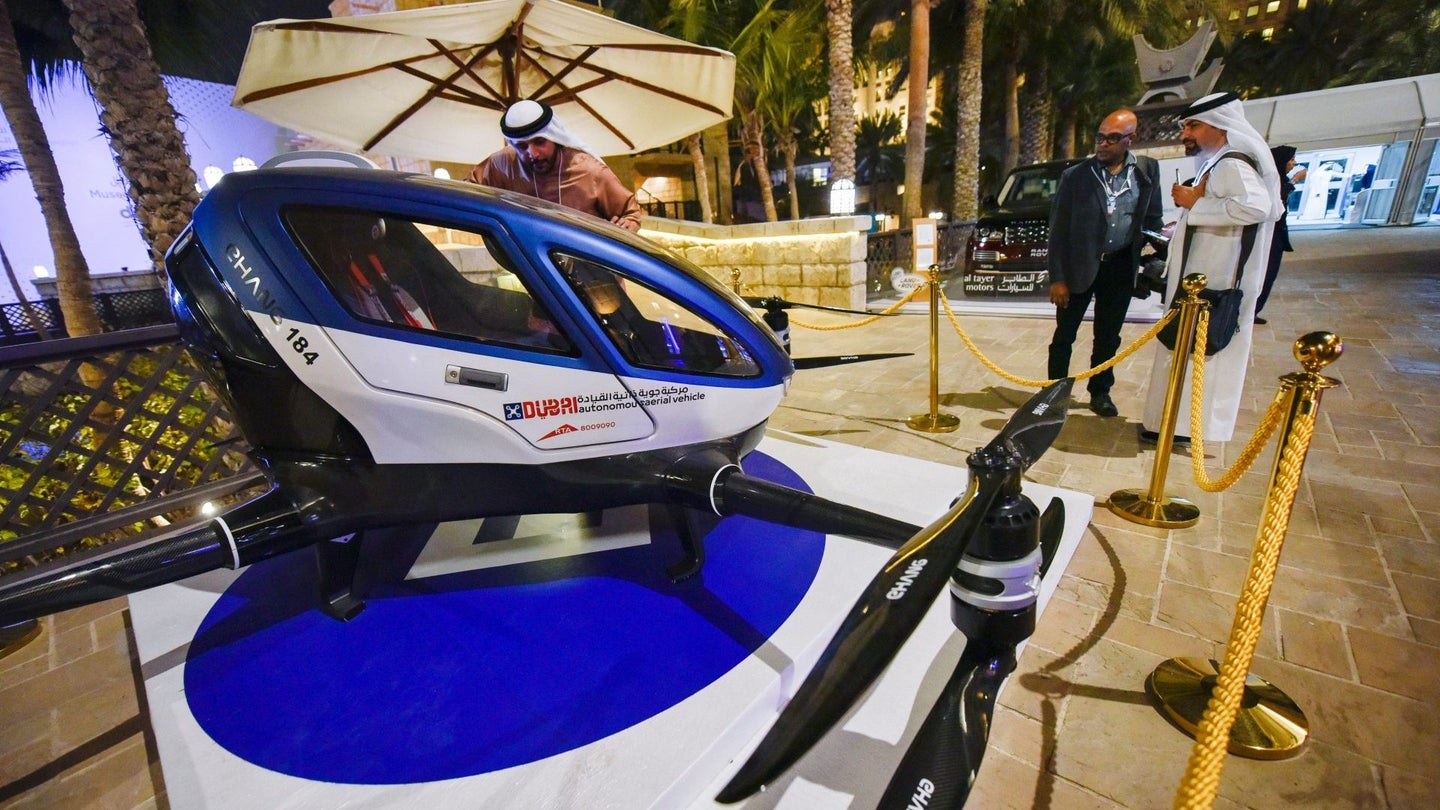EHang’s Autonomous Taxi Drone Will Take to Dubai’s Skies This Summer
The single-passenger UAV is just the start of Dubai’s driverless future.

Dubai's roads are some of the most dangerous in the world—which is one of the reasons its ruler, Sheikh Mohammed bin Rashid Al Maktoum, wants 25 percent of all passenger trips in the city-state to be performed by driverless vehicles in 2030. Another way to reduce accidents and fatalities on the streets is to skip them all together....which is what will happen when the EHang 184 takes flight in July.
How the EHang 184 Works
The EHang 184 is an autonomous aircraft designed for a single passenger and a suitcase capable of flying for 30 minutes. It uses eight rotors mounted on four arms in an X configuration, has a top flight-speed of of 160 kilometers per hour (100 mph), and a range of up to 50 kilometers (31 miles). The drone will be programmed to fly to pre-set destinations that a passenger selects from a touch-screen pad inside the cabin. The flights will be remotely monitored from a 24/7 real-time command center on the ground, as well.
More transportation applications planned
News of the real-world transportation application in Dubai was revealed by Mattar al-Tayer, the head of Dubai's Roads & Transportation Agency, at the World Government Summit this week, according to the Associated Press. But Dubai is just the start. The Chinese company has signed an agreement with the state of Nevada's Governor’s Office of Economic Development (GOED) and the Nevada Institute for Autonomous Systems (NIAS) to pursue flight testing, training, and development of the EHang 184 at Nevada’s Federal Aviation Administration Unmanned Aircraft System Test Site.
Systems safe from failure, human error
To ensure the aircraft's safety, the EHang 184 uses a suite of sensors with multiple redundant systems for backup to plot the safest flight path to a destination in real time. Each vehicle's communications are encrypted with independent keys; in the event of an in-flight emergency, the system can evaluate the situation and execute emergency landing procedures if needed, or the passenger can elect to halt flight operations and hover in place.

